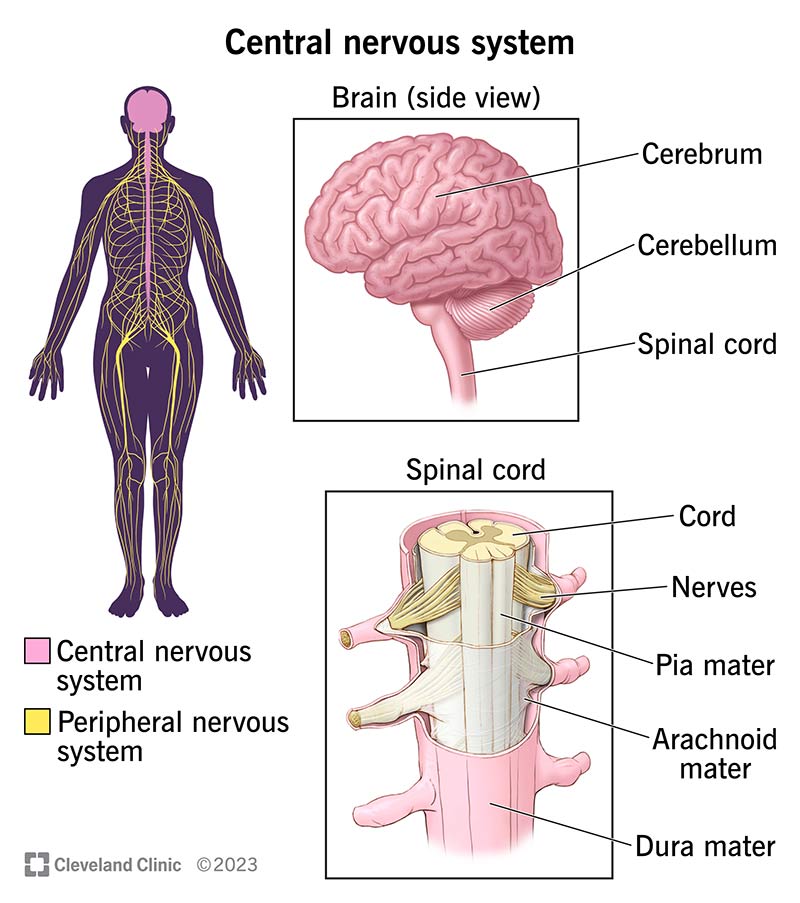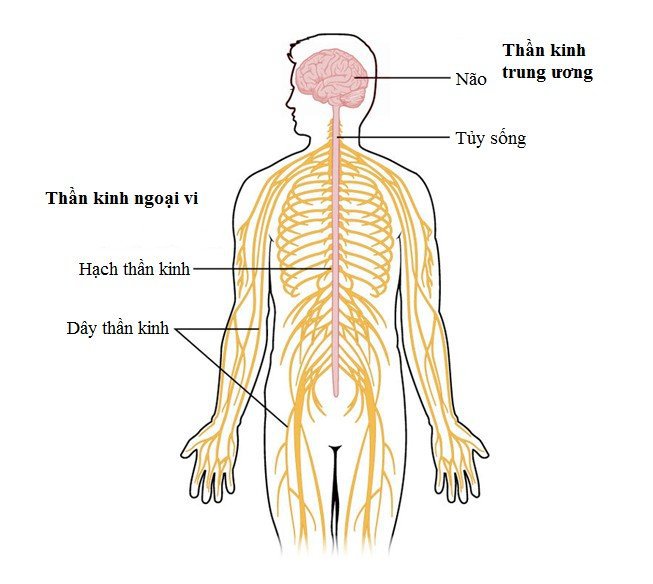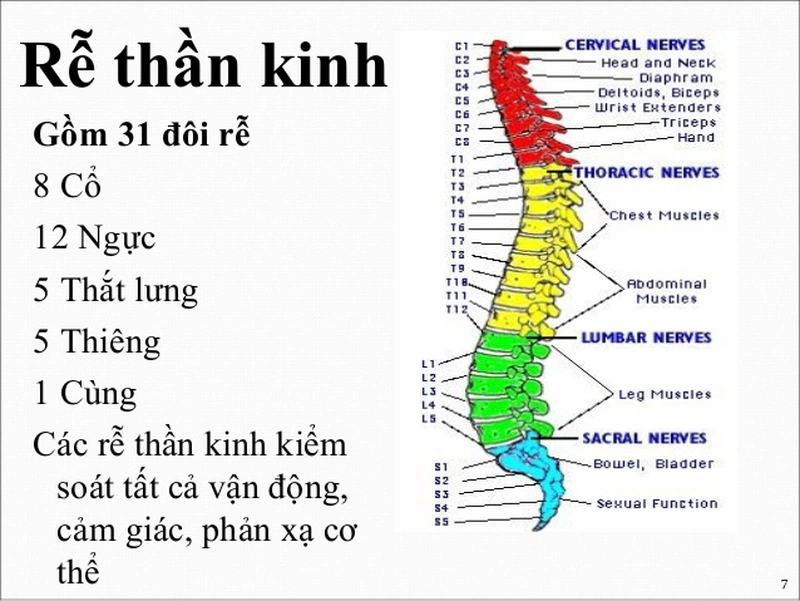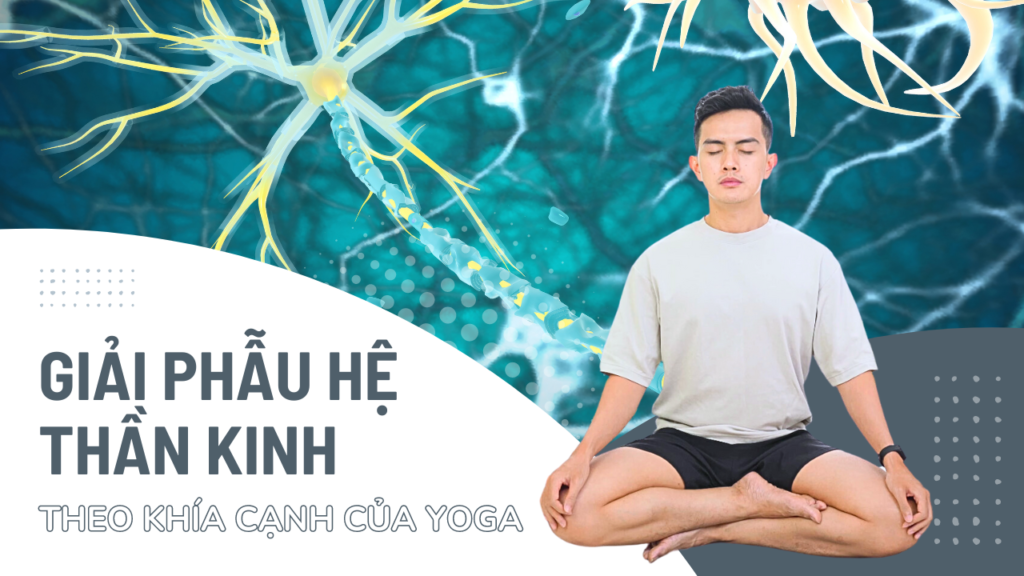The nervous system is the most sophisticated control apparatus of our body. Have you ever wondered how a simple yoga pose can trigger a series of complex reactions in the body? The answer lies in the structure and function of the nervous system. Let's discover the secret behind our body's "brain" together!
Overview Introduction

The nervous system is a complex network of nerve cells (neurons) and support structures, responsible for controlling and coordinating all activities of the body. It acts as a sophisticated communication system, transmitting electrical and chemical signals between different parts of the body.
Studying the anatomy of the nervous system is not only important for medical professionals but is also very useful for yoga practitioners like us. Understanding the structure and function of the nervous system helps us gain a deeper awareness of how the body functions, thereby optimizing our yoga practice and improving overall health.
Structure of the nervous system
The nervous system is divided into two main parts: Central Nervous System (CNS) and Peripheral Nervous System (PNS).

- Central Nervous System (CNS):
- Brain: The body's main control center, processing information and coordinating complex functions.
- Spinal cord: Bridge between the brain and other parts of the body, plays an important role in automatic reflexes.
- Peripheral Nervous System (PNS):
- Nerves: Network of nerve fibers that connect the CNS to organs and tissues in the body.
- Neuronal ganglia: Clusters of nerve cells located outside the CNS, acting as information relay stations.
Cranial Nerve

There are 12 pairs of cranial nerves, each pair has a special function:
- Olfactory nerve (I): Related to the sense of smell
- Visual nerve (II): Transmits visual information
- Oculomotor nerve (III): Controls eye movements and pupil constriction
- Pulley (IV): Controls eye movements
- Trigeminal nerve (V): Provides sensation to the face and controls chewing muscles
- External oculomotor nerve (VI): Controls eye movements
- Facial nerve (VII): Controls facial expressions and taste
- Vestibulocochlear nerve (VIII): Balance and hearing
- Glossopharyngeal nerve (IX): Sensation to the tongue and pharynx
- Vagus (X): Controls automatic functions such as heart rate and digestion
- Accessory cord (XI): Controls neck and shoulder muscles
- Hypoglossal tract (XII): Controls tongue movement
Understanding the cranial nerves can help us become more aware of the effects of yoga poses on specific body functions.
Spinal Nerves

Spinal nerves include 31 pairs, divided into groups:
- 8 pairs of necks
- 12 pairs of breasts
- 5 pairs of belts
- 5 pairs together
- 1 pair of stumps
Each spinal nerve has two roots:
- Anterior root (motor): Carry signals from the CNS to muscles and glands
- Posterior root (sensory): Carry sensory information from the body to the CNS
Spinal nerves play an important role in reflexes, allowing the body to respond quickly to external stimuli without the intervention of the brain. For example, when you accidentally touch a hot object, the withdrawal reflex occurs before you are aware of the pain.
In yoga, understanding the spinal nerves helps us become more aware of how the body responds to different postures and breathing exercises.
Clinical importance
A thorough understanding of nervous system anatomy is important in the diagnosis and treatment of many common neurological disorders such as:
- Alzheimer's disease: A progressive neurodegenerative disorder that affects memory and cognition.
- Parkinson's disease: Movement disorder caused by impaired dopamine production in the brain.
- Sciatica: Pain along the sciatic nerve, often caused by a herniated disc.
- Carpal tunnel syndrome: Compression of the median nerve in the wrist, causing numbness and pain.
- Stroke: Interruption of blood supply to the brain, leading to damage to brain cells.
Harvard University research shows that yoga and meditation can help improve neurological function and reduce oxidative stress, which is beneficial in preventing and supporting the treatment of some neurological disorders.
Conclude
Nervous system surgery is a complex but extremely interesting field. From the brain to the spinal cord, from the cranial nerves to the spinal nerves, each component plays an important role in maintaining the balance and function of our body.
For yoga practitioners, understanding the nervous system can enhance the practice experience, giving us a deeper awareness of the connection between mind and body. When we perform a yoga pose, not only are the muscles and joints activated, but also a complex network of nerve signals is stimulated.



